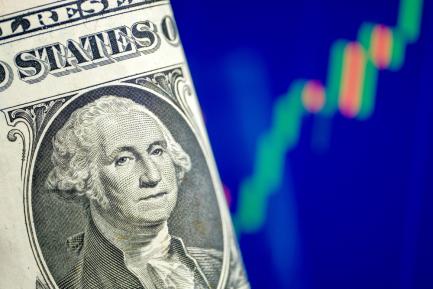
The Silicon Valley Bank intervention and its implications
We break down the causes of Silicon Valley Bank’s collapse, and also its consequences: from the fall of Credit Suisse to the impact on investor expectations and banking stocks.
Since the first half of 2022, the major central banks have raised official interest rates rapidly and sharply in an attempt to contain inflation. Silicon Valley Bank (SVB), the sixteenth largest bank in the US by volume of assets – and yet one which was neither directly supervised by the Fed nor subject to the same prudential requirements as the country’s largest banks – was unable to survive in this scenario.
SVB was particularly vulnerable to a scenario of sudden interest rate rises due to the composition of its balance sheet. Specifically, it was a bank with a deposit base that was highly concentrated in big tech companies, which are predominant in Silicon Valley. These deposits had tripled since 2018 (see first chart) and more than 95% were not guaranteed by the Deposit Guarantee Fund (FDIC).1 Deposits of large firms tend to involve higher volatility and usually demand a relatively high return. On the asset side, the bank allocated this liquidity to the acquisition of low-risk assets, but with long-term maturities and at a fixed interest rate, such as US sovereign debt and mortgage-backed securities. Despite these assets’ low credit risk profile, SVB’s balance sheet was greatly exposed to interest rate risk: in the face of an increase in rates, servicing its liabilities became significantly more expensive (in line with short-term rates) while its assets yielded a lower fixed rate. In other words, following the rise in interest rates, SVB faced significant pressure on its profitability.
- 1. Figure as of the end of 2022, according to the annual report submitted by SVB to the SEC. The FDIC (Federal Deposit Insurance Corporation) guarantees deposits up to 250,000 dollars. Amounts exceeding this threshold are more vulnerable to bank runs.

SVB developed a plan to alleviate this profitability problem which was threatening its rating. The problem was that it was unable to survive long enough in order to execute it. The plan involved selling a portion of its portfolio of low-yield assets in order to reinvest the proceeds in shorter-term debt, which currently provides a much higher yield. With that higher return on its assets, it would be able to pay its depositors without incurring losses. Upon selling the debt, SVB had to recognise losses, because in an environment of higher interest rates those bonds were worth less than what it had paid for them. To cover those losses, a share capital increase was planned, but unfortunately it failed to raise enough interest. Rumours about SVB’s problems in managing this situation, which quickly spread on social media, triggered a stampede of depositors rushing to withdraw their funds within just 24 hours. A day later, the authorities intervened.
To calm the financial markets and instil confidence in the depositors, the US Treasury guaranteed all SVB deposits, including those over 250,000 dollars. In addition, the Federal Reserve created a programme to provide liquidity to the financial sector,2 as well as facilitating access to the discount window (the main instrument which provides banks with liquidity) – tools which have been used extensively by banks in recent weeks (see second chart).
- 2. The Bank Term Funding Program.

These tensions reverberated across the Atlantic a few days later, when the focus of the financial markets fell on Credit Suisse (CS). This was a bank with good capital and liquidity metrics but which was suffering reputational problems, had incurred losses due to failed transactions (such as the collapse of Archegos and Greensill Capital) and, much like SVB, had a deposit base for which the deposit guarantee scheme provided little coverage. In this case, the factor that triggered a flight of deposits was the statements by the bank’s main shareholder warning that it would not be willing to resort to a share capital increase if this were necessary. After a sharp fall in the value of its shares and in an attempt to slow the flight of deposits and calm sentiment in the financial markets, Switzerland’s central bank and government facilitated the acquisition process by UBS, which was finally confirmed during the weekend of 18 March. Among other decisions, as part of this transaction the Swiss authorities decided that a portion of CS’s debt (known as AT1) would lose all its value – a measure which provoked some controversy because the shareholders (who, in principle, should bear the greatest losses) did not lose the full value of their investments in CS.
These episodes have had multiple impacts on the financial markets. Firstly, investors’ expectations regarding central bank interest rates in the next few months have been revised downwards. Whereas before the SVB bailout the Fed was expected to raise interest rates as high as 5.75% and to keep them there until the end of the year, the markets are now anticipating that rates will reach 5.25% and that the Fed will begin cutting rates in the second half of 2023, bringing them back down to 4% by the end of the year. In the case of the ECB, the markets were previously anticipating a terminal rate of 4% and expecting rates to remain at that level until the beginning of 2024, whereas they are now expecting the ECB to place the depo rate
at a peak of 3.50% in the second half of 2023.
Secondly, bank stocks fell sharply, both due to the revision of expectations regarding central bank rates (which had favoured the sector’s stock valuations in previous months) and due to the perception of financial instability. In particular, during the month of March the value of banking sector stocks fell in Europe and in the US by 14% and 19%, respectively, whereas the Euro Stoxx 600 and the S&P 500 registered fluctuations of –0.7% and +3.5%. Thirdly, financial conditions have tightened, as can be seen in the last chart. In addition, in the US there has been a certain transfer of deposits from small and medium-sized banks to larger banks. The tightening of financial conditions, if maintained over time, could have an impact on economic activity, which may become more visible in the second half of 2023. The US appears to be more vulnerable to these risks, reducing the chances of a soft landing for the economy in 2023.




